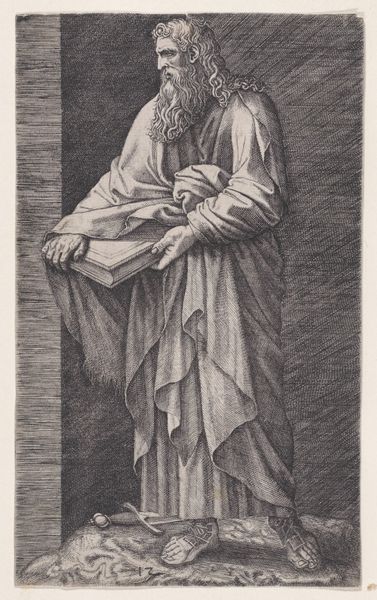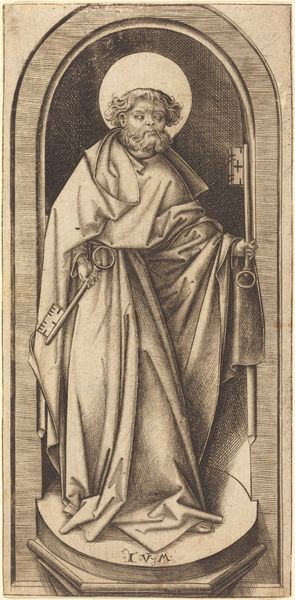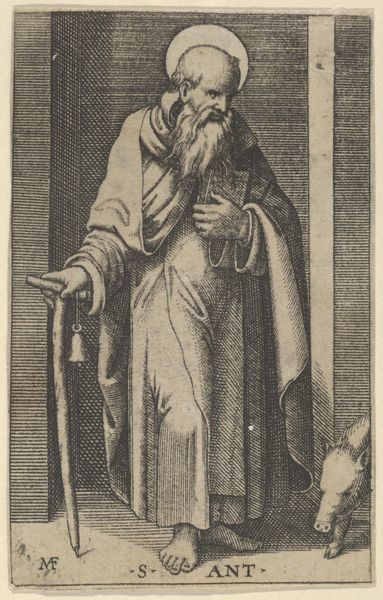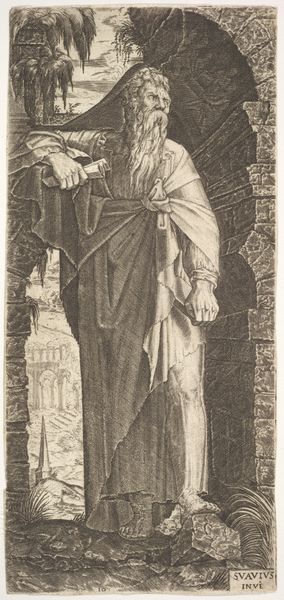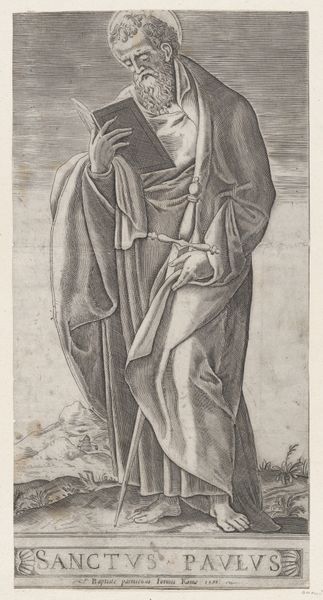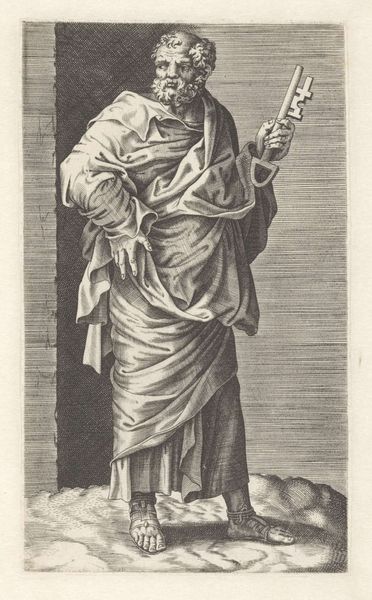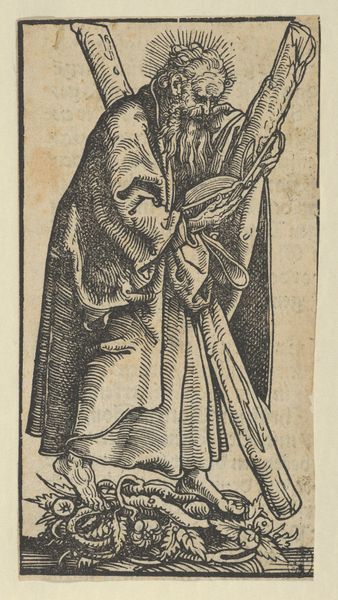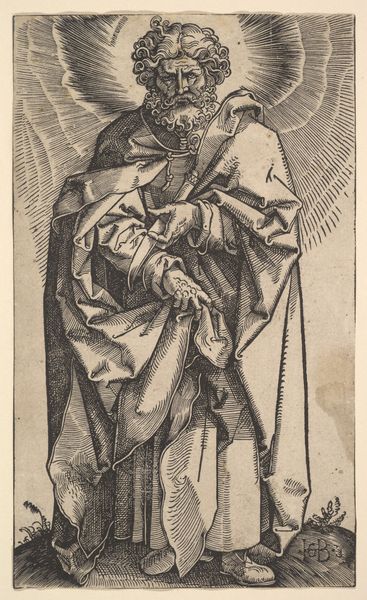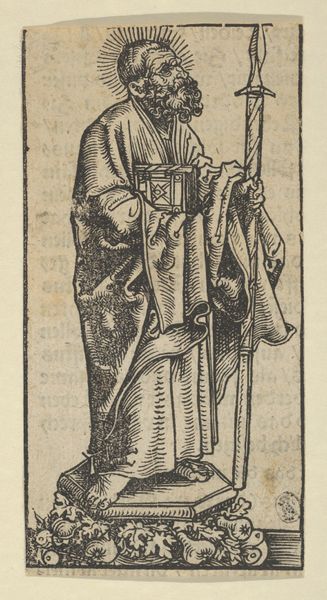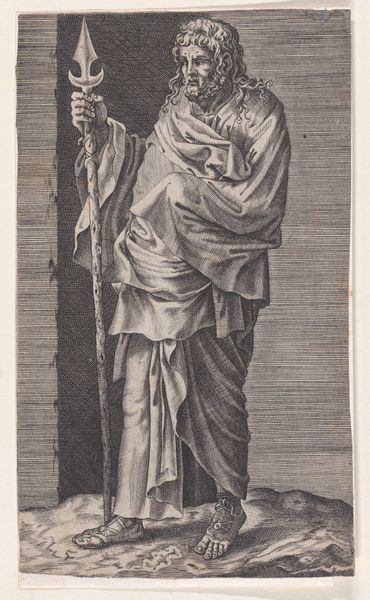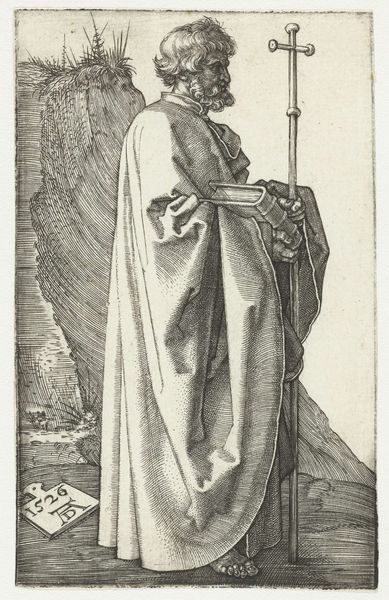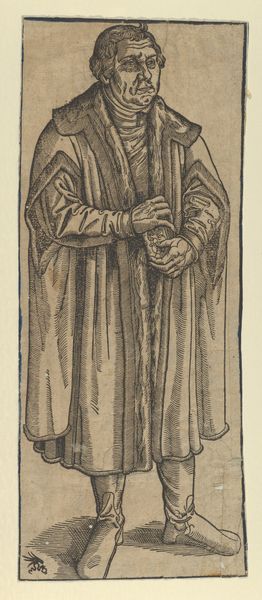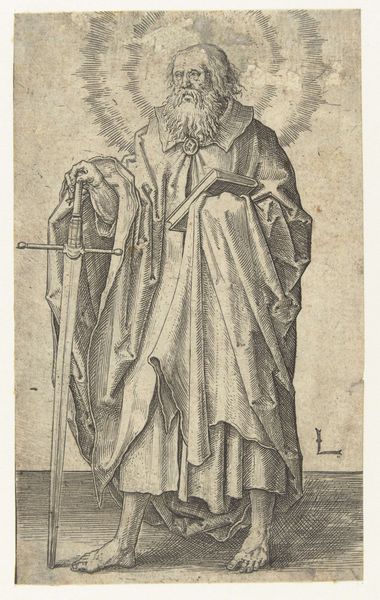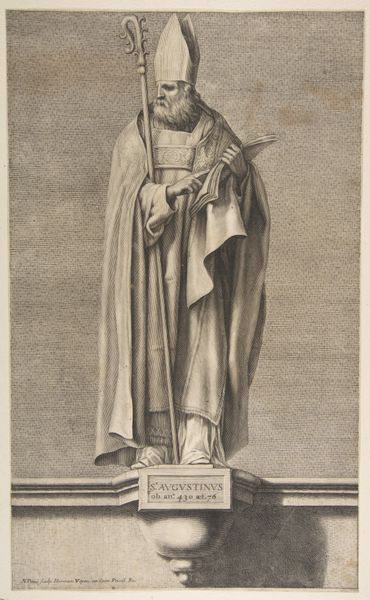
print, engraving
#
portrait
# print
#
figuration
#
portrait reference
#
portrait drawing
#
history-painting
#
northern-renaissance
#
engraving
Dimensions: sheet (cut within platemark): 19.7 x 9.1 cm (7 3/4 x 3 9/16 in.)
Copyright: National Gallery of Art: CC0 1.0
Curator: Before us, we have "Saint James Major," an engraving created around 1545 by Lambert Suavius. Editor: Immediately, I'm struck by the weariness etched into his face. He's leaning on that staff like it's the only thing holding him upright. It seems very human and raw for a depiction of a Saint. Curator: Exactly, the way Suavius renders Saint James’s clothes conveys so much about labor and travel; you can almost feel the weight of the fabric. I want to investigate more the idea of how Northern Renaissance artists engaged with classical form via the readily available graphic medium of printmaking and how printmaking facilitated widespread access and artistic transformation. Editor: I agree with you. Look how the use of the engraved line doesn't romanticize toil. The etched lines that make up his clothes give them substance and even show their flaws—they emphasize the worn nature of his clothing and belongings. They communicate so much, using very little materially. What an economical feat for spreading religious iconography! Curator: Well, it makes me ponder the humanity Suavius brings to the divine. I feel a story whispered here of faith intertwined with earthly struggle. It resonates still, that vulnerability and devotion hand in hand. Editor: Yes! And beyond the thematic, just look at the level of detail Suavius managed to achieve with engraving tools! This wasn’t some grand oil painting. This was about mass production, the grit of the workshop translating into delicate lines. Curator: That's something the work certainly shares. And somehow, knowing the process infuses the final image with even deeper emotion. A lovely conversation—thank you! Editor: My pleasure; materiality shaping meaning—that’s what truly grabs me! Thanks for illuminating its spiritual side for me as well!
Comments
No comments
Be the first to comment and join the conversation on the ultimate creative platform.
